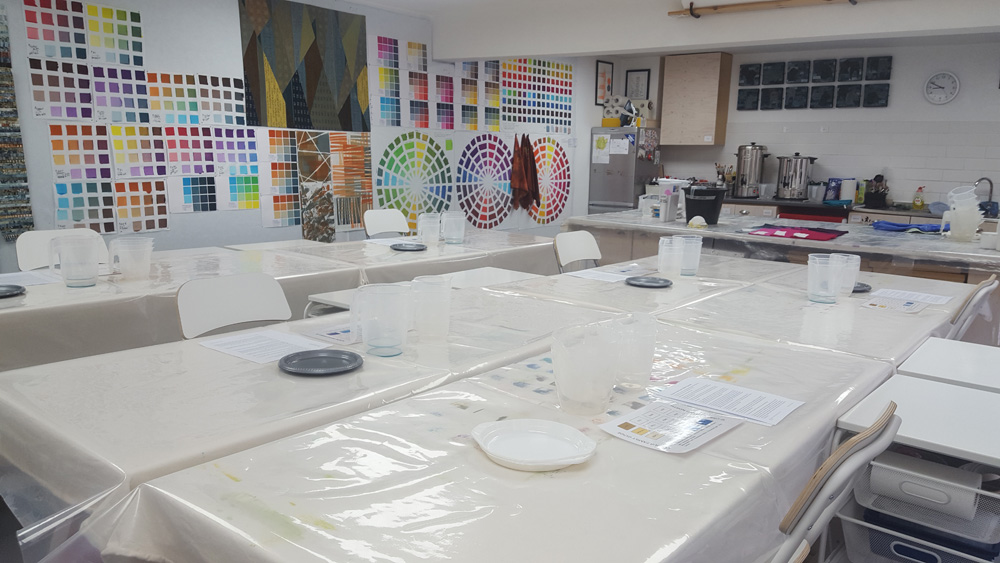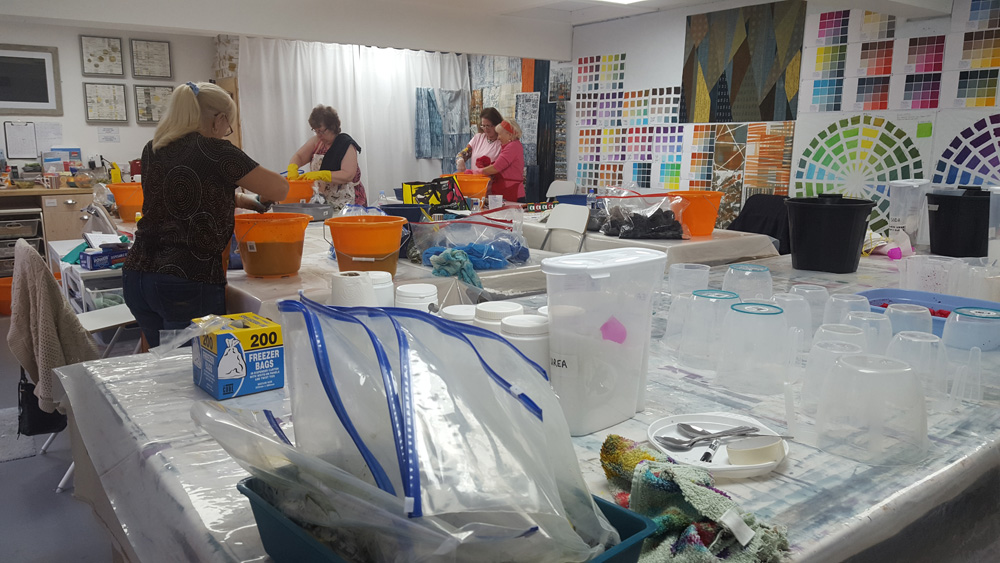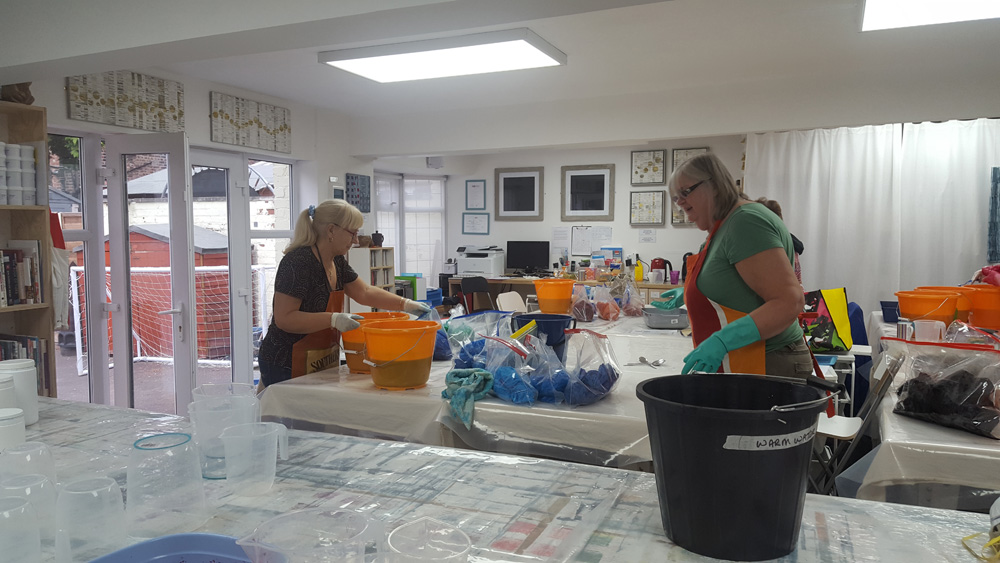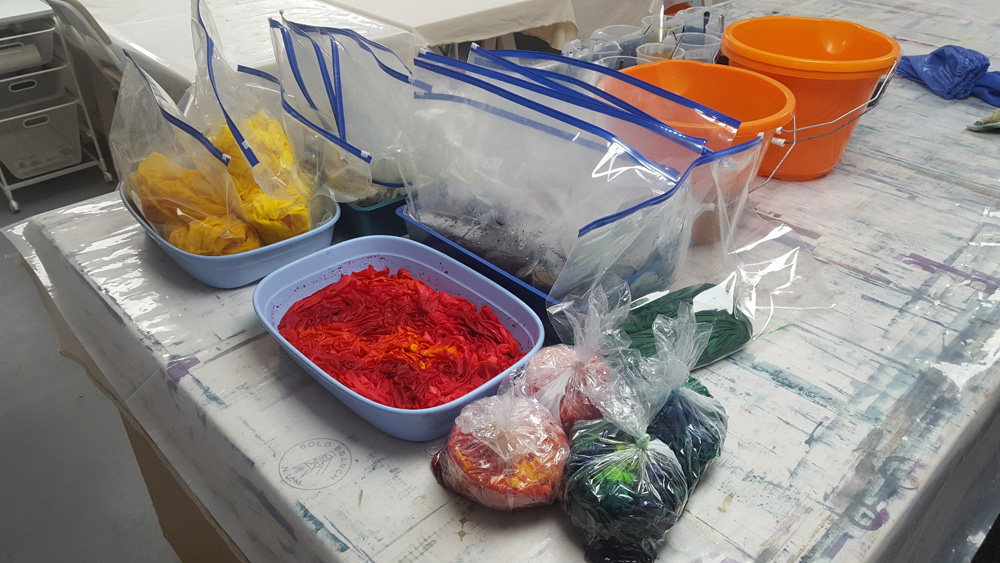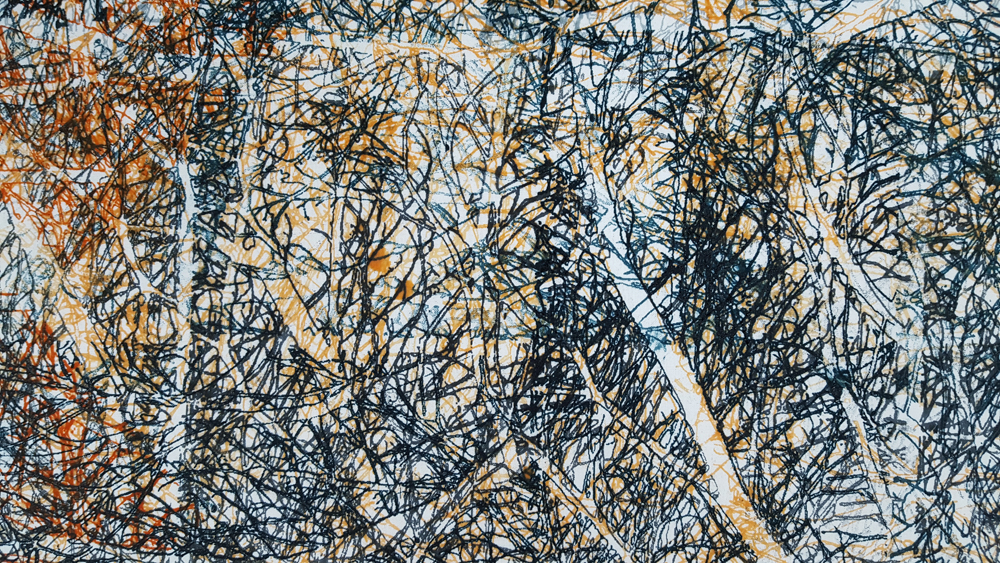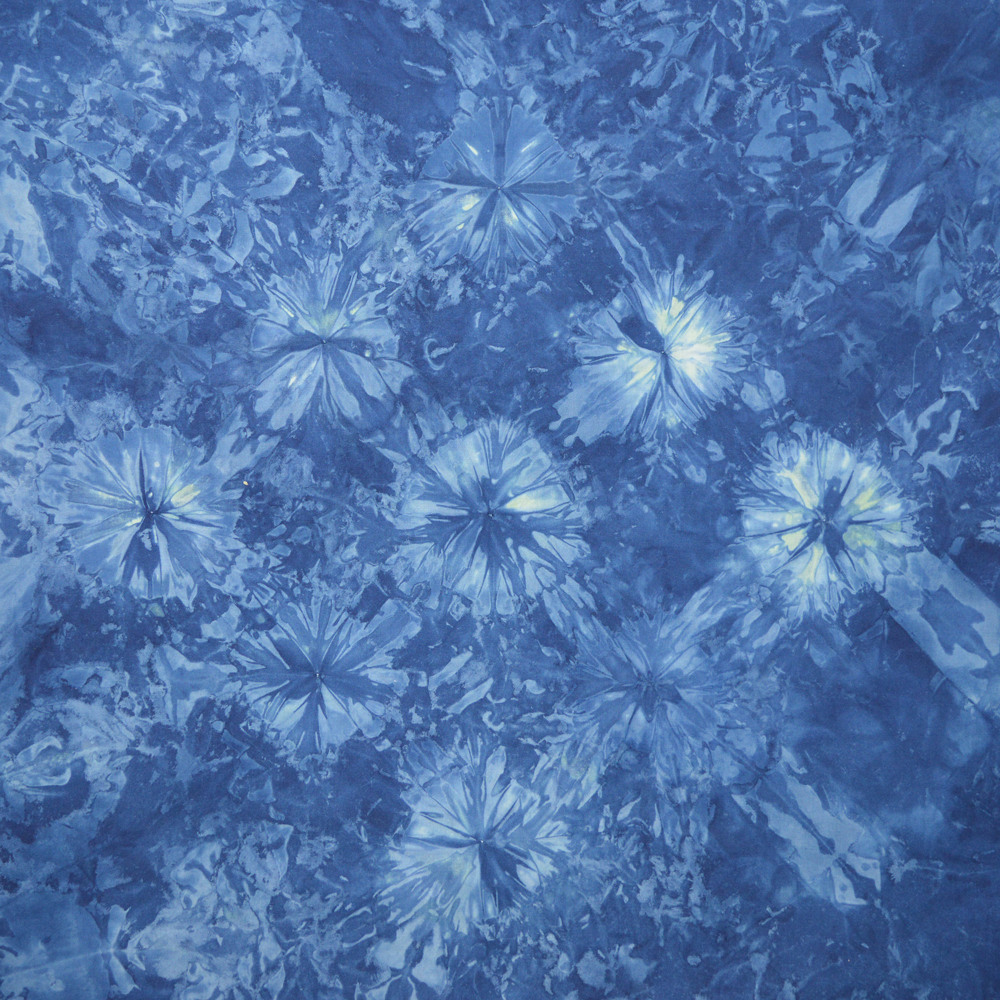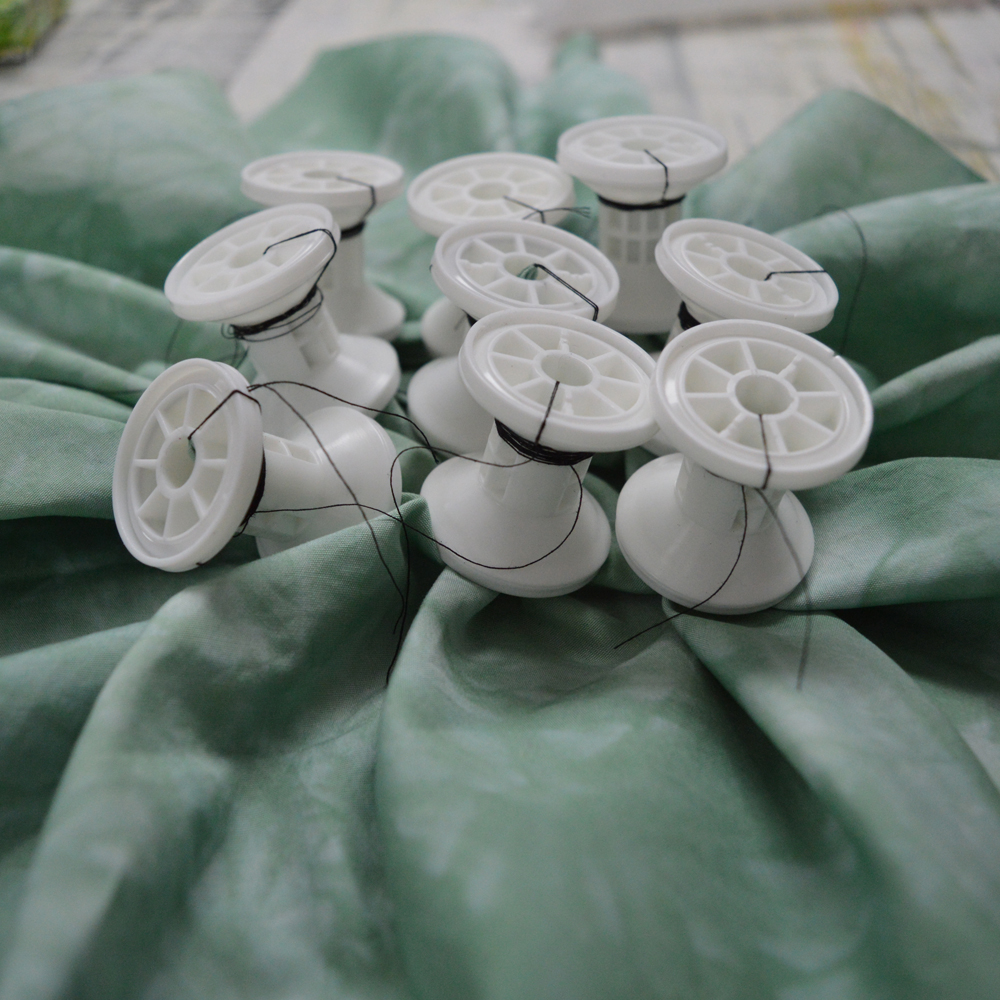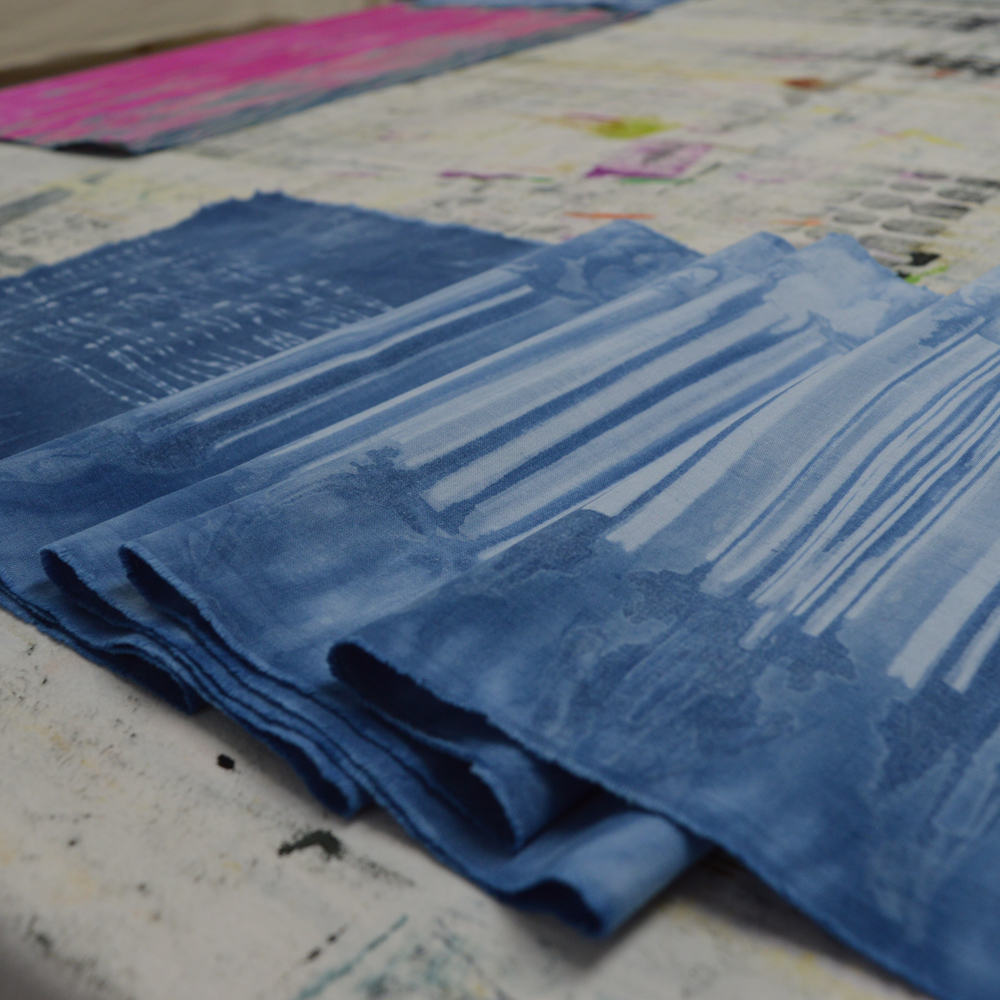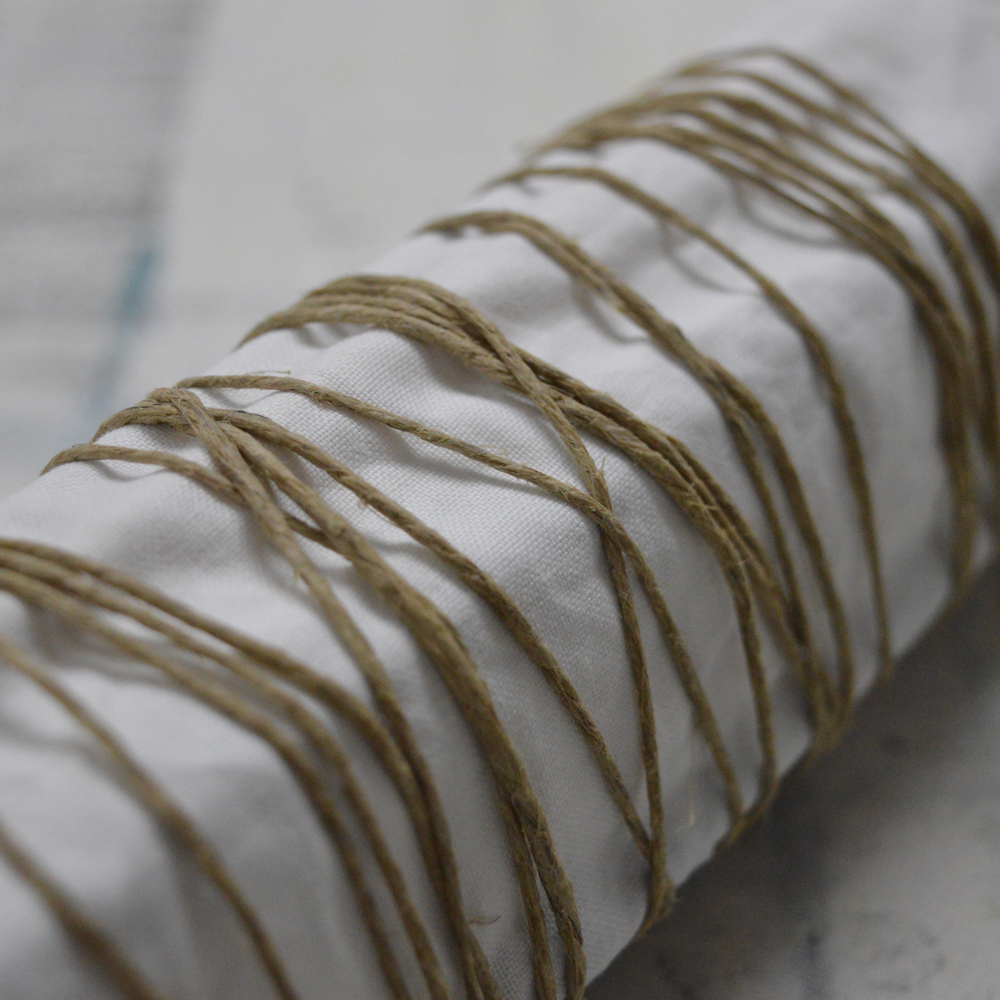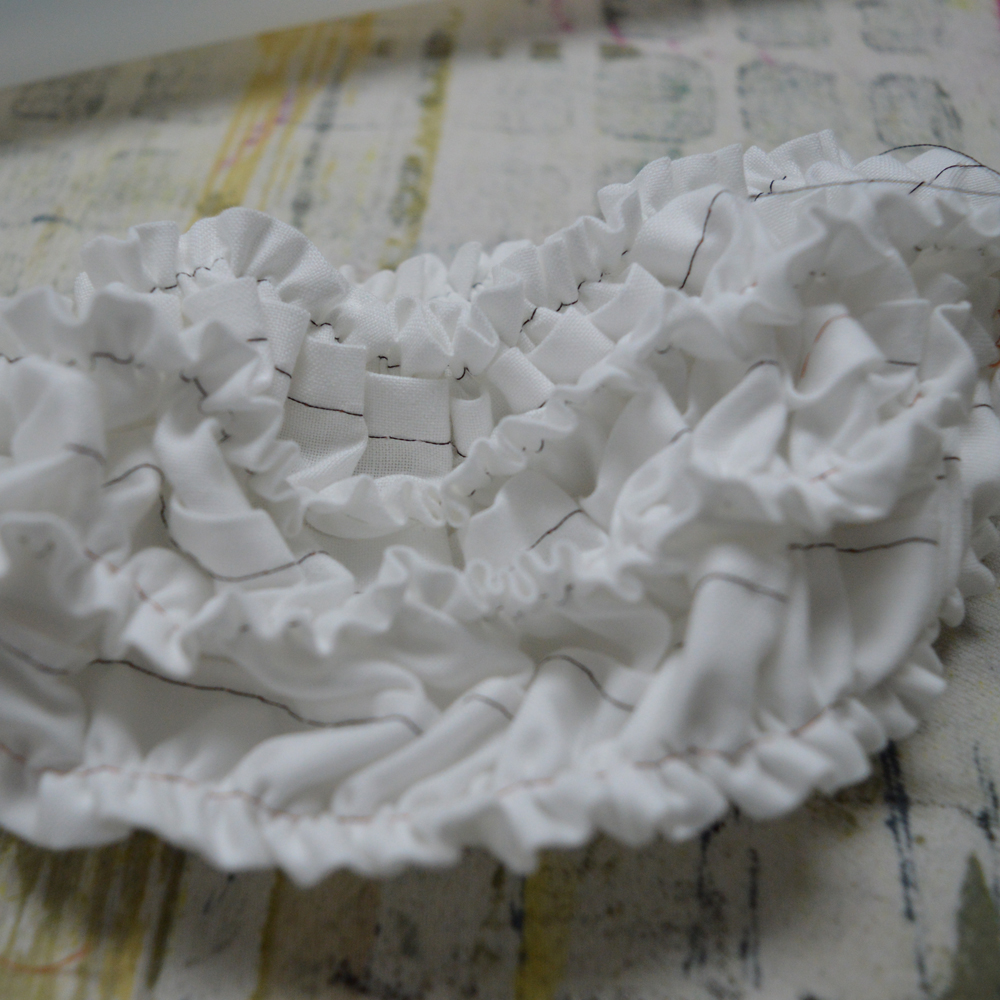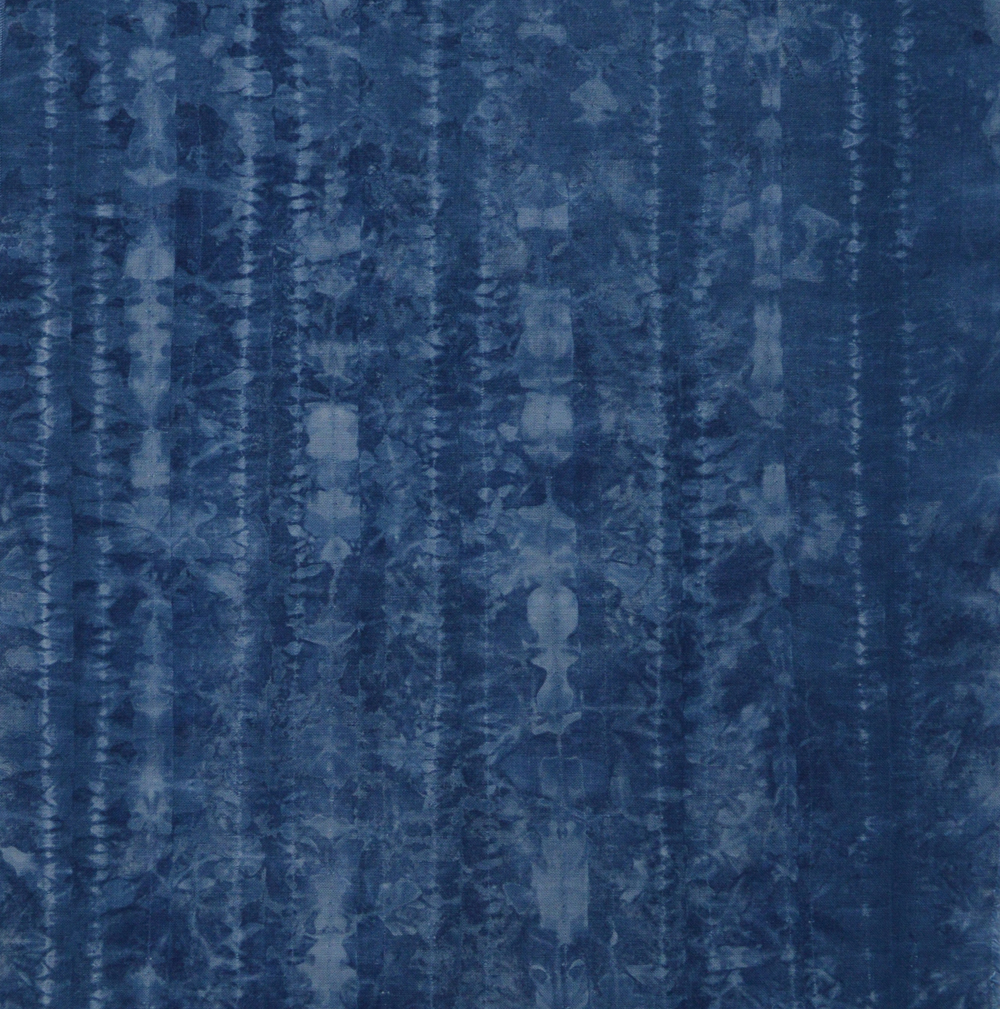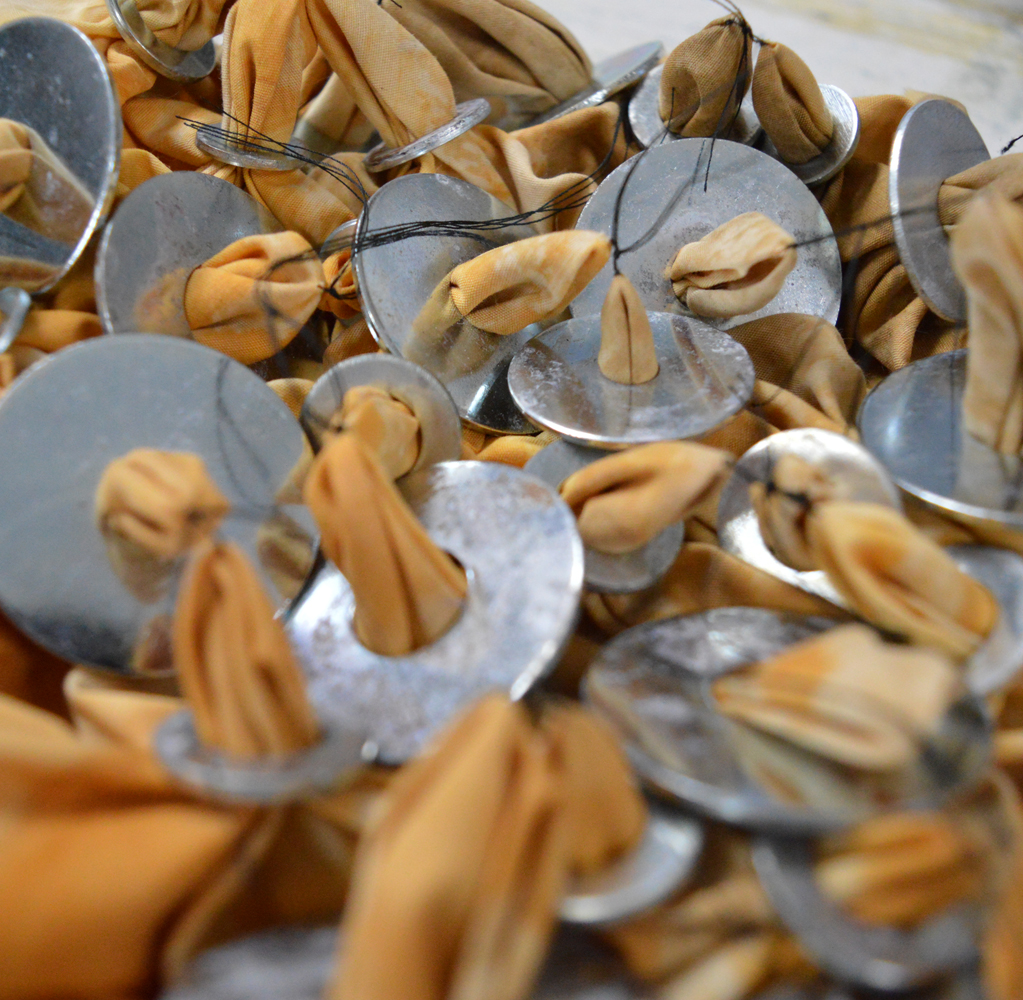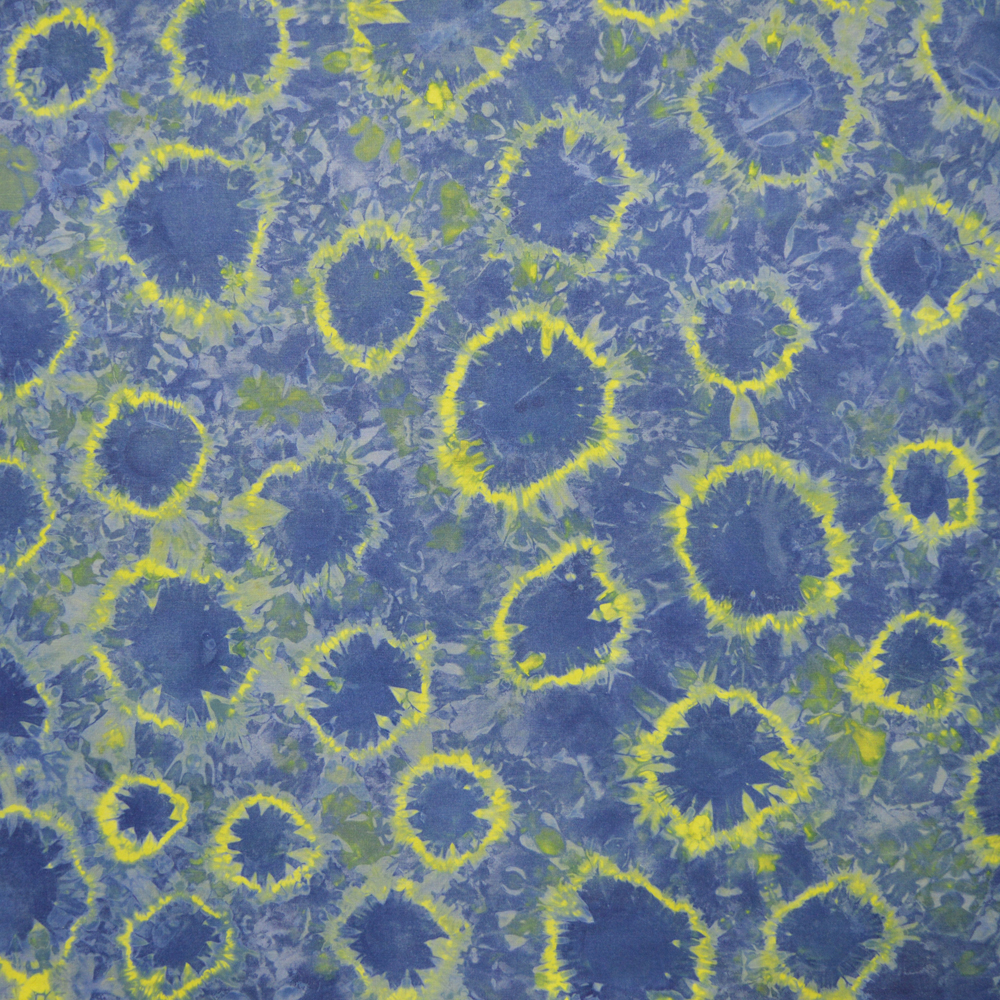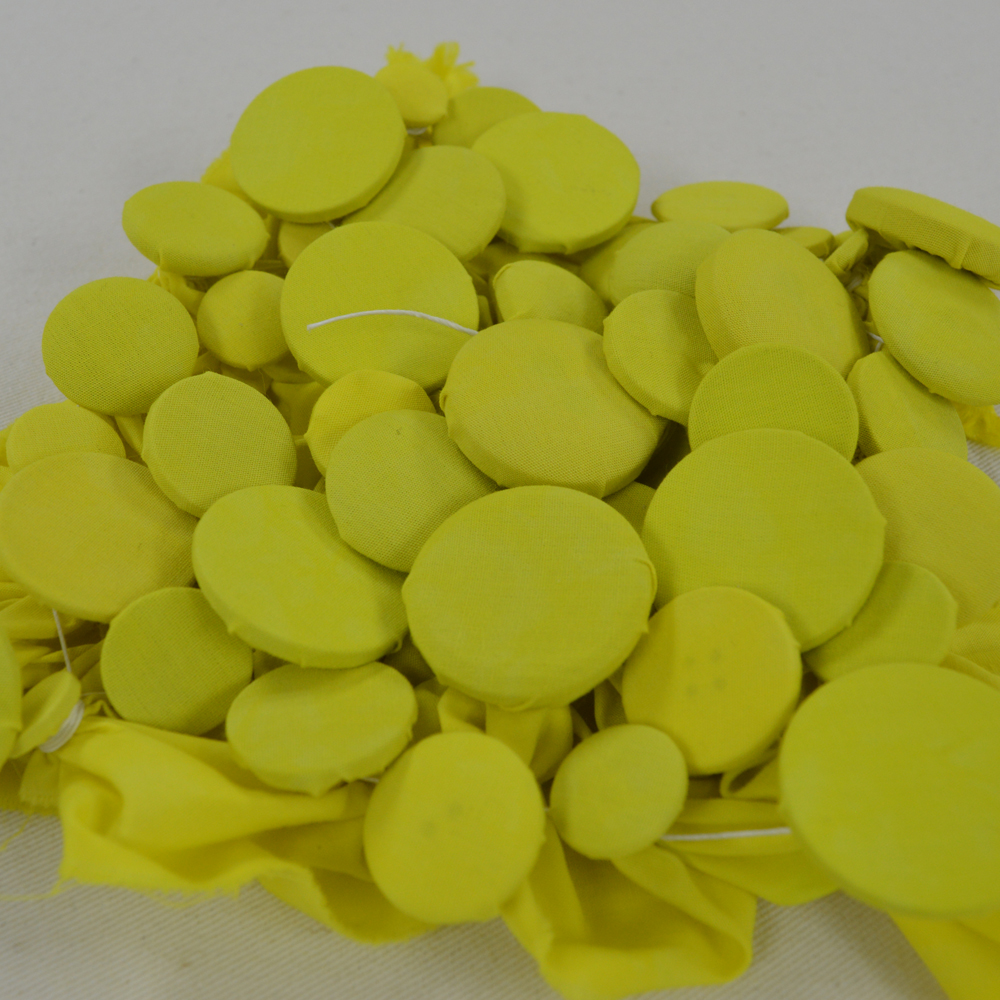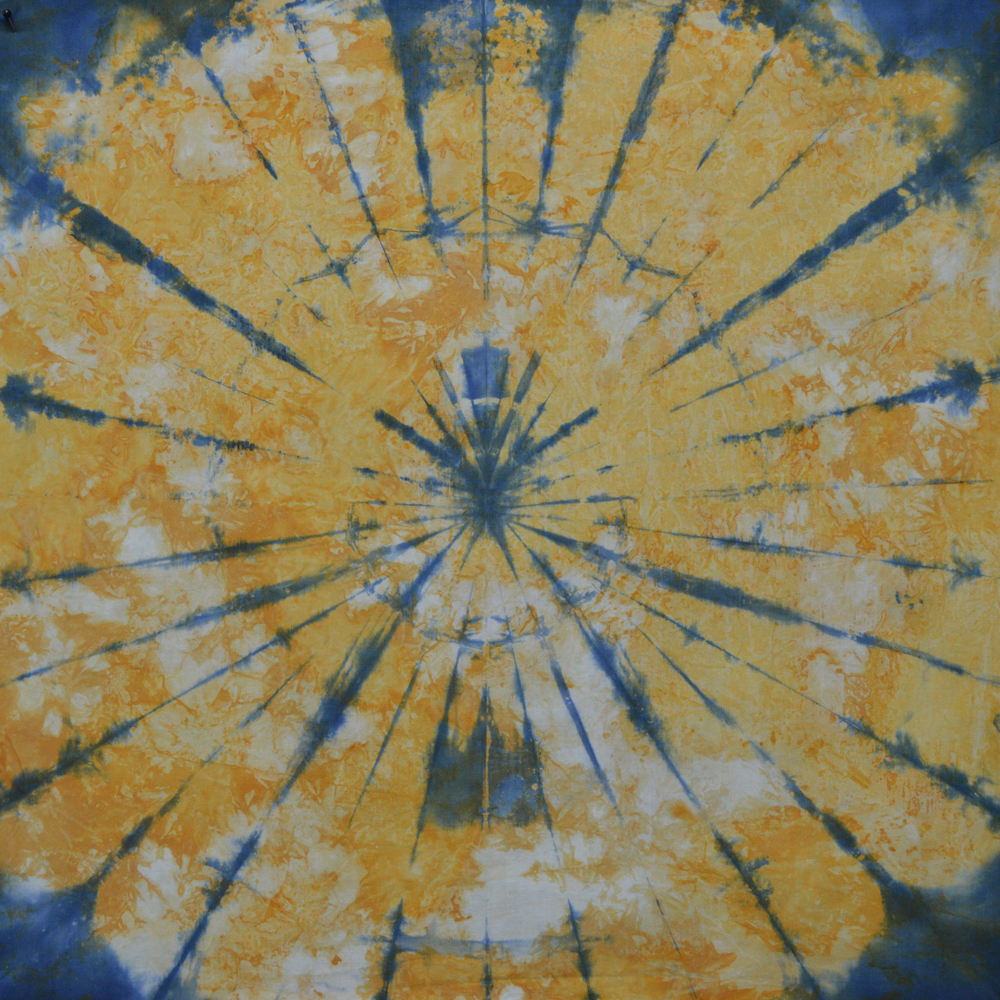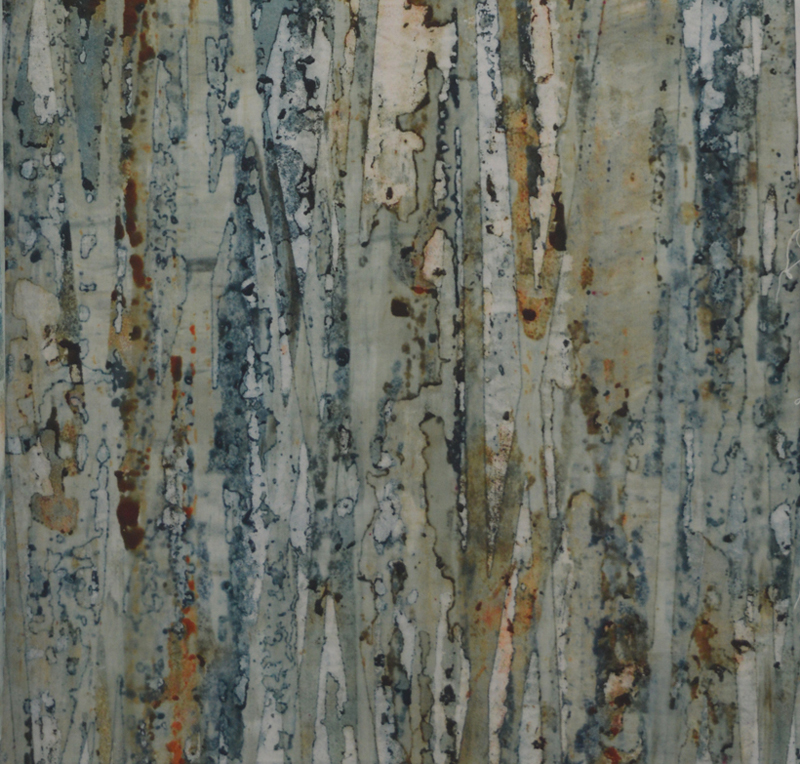It may be cold and grey outside but it is artfully grey inside! I’ve spent this week breakdown printing using squeezy bottles and wooden printing blocks. All in one single colour - grey. The humble squeezy bottle is such a useful tool. I have collected a range over the years with different size nozzles so I’ve been able to play with scale when using them to draw grids on my screen. And by varying the strength of the dye I have been able to play with value. I’m slowly building a palette of printed fabrics to use together.
This is the first time I have used wooden print blocks with breakdown printing. I’ve tried a couple of things. Using them to stamp thickened dye onto the screen is quick and easy but it doesn’t get much dye on the screen so I’m only getting 1 or 2 good prints per screen. This would be OK in the summer when you can dry screens really quickly but much slower in the winter. The other way I have used them is to embedded them into a layer of thickened dye. Sometimes on their own. And sometimes combined with a grid on the screen. This shows much more promise.
I love this stage in developing a new series of work. Playing with new ideas. Auditioning fabrics. Stitching samples. Figuring out what is missing and going back to the bench to print more fabric. Figuring out if I need to include fabrics made using other surface design techniques. Who cares if it is cold and grey outside!
And whilst I wait for screens to dry I have been adding workshop dates to my calendar. There are only 3 places left on my Breakdown Your Palette workshops in 2019 so I have just added 2 workshops in 2020. How crazy is it to be planning that far ahead! The sessions are on 18th to 22nd May 2020 and 22nd to 26th June 2020. Details can be found here.
I’ve also added new dates for my 1 day a month Introduction to Surface Design course and over the next couple of weeks will be announcing some new 5 day workshops and, very excitingly, workshops with some wonderful guest tutors. Life is good. Now back to my bench!






